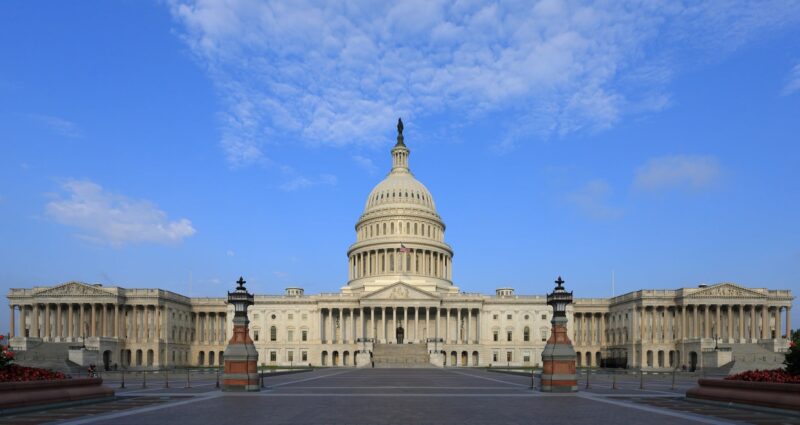
The Energy Department’s Office of Environmental Management would get $6.4 billion for fiscal 2018, and take on cleanup responsibility for three new facilities, under a DOE budget approved Thursday by the House of Representatives.
The House approved the 2018 DOE budget recommendation on a highly-partisan 235-192 vote, with five Democrats voting “aye” and five Republicans voting “no.” The DOE budget was part of the roughly $713-billion Make America Secure Appropriations Act, which also includes funding for the Defense Department, the Legislative Branch, and Military Construction and Veterans Affairs.
During the days-long debate on the House floor, Rep. Julia Brownley (D-Calif.) offered and withdrew a pair of amendments that would have added roughly $25 million to the Office of Environmental Management’s (EM) non-defense environmental cleanup account, which covers funding for remediation projects not directly linked to Cold War nuclear weapons programs.
House lawmakers also voted down an amendment from Rep. Jacky Rosen (D-Nev.) that would have removed $30 million in funding intended to help DOE prepare defense nuclear waste for permanent disposal.
The House’s recommended 2018 EM budget is about even with the 2017 appropriation, and roughly 1.75 percent more than what the Donald Trump administration requested. Substantially all of DOE EM’s major cleanup sites would get a funding boost compared with the 2017 appropriation. The White House had requested cuts for most of the major sites, compared with the 2017 appropriation.
The administration this week said Trump would sign the House’s bill, if it reached his desk as it is. To do that, it would have to survive its pending trip through the Senate, where lawmakers at the committee level have approved different 2018 budget recommendations than the House.
Although the administration has signaled support for the House budget just passed, the White House decried the bill’s proposal to fund only $75 million of the $225 million the administration sought to transfer facilities no longer needed by the National Nuclear Security Administration for active nuclear weapons programs to DOE EM for cleanup.
Under the House bill, EM would begin remediating three additional facilities in the budget year beginning Oct. 1. They are:
- The Biology Complex at the Y-12 National Security Complex in Tennessee; $35 million.
- The B280 Pool Type Reactor at the Lawrence Livermore National Laboratory in California; $30 million.
- The Experimental Breeder Reactor–II Reactor Dome at the Idaho Site; up to $10 million.
The White House also slammed House appropriators for a provision of their 2018 DOE budget that would forbid the agency from withdrawing money from the Nuclear Waste Fund to work on consolidated interim storage sites.
The White House likewise objected to the House’s plan to continue funding the Mixed Oxide Fuel Fabrication Facility at the Savannah River Site near Aiken, S.C. The Trump administration, like the Barack Obama administration before it, wants to cancel the unfinished facility, which is designed to turn surplus weapon-grade plutonium into fuel for commercial nuclear reactors.
Instead, the White House wants to dilute the 34 metric tons of plutonium, mix it with concrete-like grout, and send the material to the EM-managed Waste Isolation Pilot Plant near Carlsbad, N.M., for permanent disposal.
The Waste Isolation Pilot Plant would need to be greatly expanded before the plutonium could be interred there. The administration’s plan for the plutonium also would require an act of Congress, officials including former DOE Secretary Ernest Moniz have said.
The Waste Isolation Pilot Plant would take a tiny step toward eventual expansion under the House’s budget, which would provide the more-than-$320-million the White House requested, including $65 million to design and build a new ventilation system and new exhaust shaft to increase underground airflow in the crucial transuranic waste disposal facility.
When DOE completes the upgrades it plans to begin in 2018, the agency and its contractors could mine out new waste-storage space at the Waste Isolation Pilot Plant without having to pause waste-disposal or mine maintenance operations, as is done now.
In total, the House’s 2018 DOE budget would give the agency roughly $30 billion: about 3 percent less than the 2017 appropriation, but around 6.5 percent more than what the Trump requested.